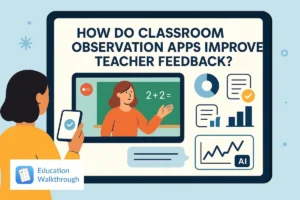Instructional coaching is a powerful tool in the realm of education, and collaborative learning is one of its most effective strategies. In this glossary article, we will delve into the depths of collaborative learning within the context of instructional coaching, exploring its definition, importance, strategies, benefits, challenges, and the role of technology in its implementation.
As we navigate through this comprehensive exploration, we will uncover the intricate layers of collaborative learning, and how it intertwines with instructional coaching to create a dynamic and effective learning environment. This is not just an academic exploration, but a journey into the heart of learning itself.
Definition of Collaborative Learning in Instructional Coaching
Collaborative learning in instructional coaching is a teaching method where the coach works together with a group of learners, fostering an environment where everyone learns from each other. It is a shift from the traditional model of teaching, where the coach is the sole source of knowledge, to a more interactive model where learners actively participate in their learning process.
This approach promotes a sense of community, encourages learners to take responsibility for their learning, and fosters critical thinking and problem-solving skills. It is a dynamic and engaging method of learning that goes beyond the mere acquisition of knowledge to the development of essential life skills.
Key Components of Collaborative Learning
Collaborative learning is not just about grouping learners together; it involves several key components that make it effective. These include positive interdependence, where each member’s success is tied to the success of the group; individual accountability, where each member is responsible for their learning; face-to-face interaction, which promotes communication and relationship building; and group processing, where the group reflects on their learning process and makes necessary adjustments.
These components work together to create a learning environment that is engaging, interactive, and conducive to deep learning. They also foster a sense of community among learners, promoting social skills and emotional intelligence.
Role of the Instructional Coach in Collaborative Learning
The role of the instructional coach in collaborative learning is crucial. The coach is not just a facilitator, but a guide, a mentor, and a collaborator. They create the conditions necessary for collaborative learning to take place, guide the learning process, provide feedback, and help learners navigate through challenges.
The coach also models collaborative behavior, promotes positive group dynamics, and ensures that all learners are actively engaged in the learning process. They are the glue that holds the collaborative learning process together, ensuring that it is effective and beneficial for all learners.
Importance of Collaborative Learning in Instructional Coaching
Collaborative learning is not just a teaching method; it is a philosophy of learning that has profound implications for instructional coaching. It recognizes that learning is a social process, and that learners learn best when they learn together. It also acknowledges the importance of diversity in learning, recognizing that each learner brings unique perspectives and experiences to the learning process.
Collaborative learning also promotes a sense of community among learners, fostering social skills and emotional intelligence. It encourages learners to take responsibility for their learning, promotes critical thinking and problem-solving skills, and fosters a love for learning. It is a powerful tool in the hands of an instructional coach, enabling them to create a dynamic and effective learning environment.
Benefits of Collaborative Learning
Collaborative learning has numerous benefits. It promotes deep learning, as learners engage with the material on a deeper level through discussion and problem-solving. It fosters critical thinking skills, as learners are encouraged to think critically and question assumptions. It also promotes social skills and emotional intelligence, as learners interact with each other and navigate through group dynamics.
Furthermore, collaborative learning encourages learners to take responsibility for their learning, fostering a sense of ownership and independence. It also fosters a love for learning, as learners find the learning process engaging and enjoyable. These benefits make collaborative learning a powerful tool in instructional coaching.
Challenges of Collaborative Learning
Despite its numerous benefits, collaborative learning is not without challenges. One of the main challenges is managing group dynamics. Not all learners work well in groups, and conflicts can arise. It is the role of the instructional coach to manage these dynamics and ensure that the learning environment remains conducive to learning.
Another challenge is ensuring that all learners are actively engaged in the learning process. Some learners may dominate the discussion, while others may be passive. The coach needs to ensure that all learners have an equal opportunity to participate and learn. Despite these challenges, with effective management, collaborative learning can be a highly effective teaching method.
Strategies for Implementing Collaborative Learning in Instructional Coaching
Implementing collaborative learning in instructional coaching requires careful planning and execution. The coach needs to create the conditions necessary for collaborative learning to take place, guide the learning process, and manage group dynamics. They also need to ensure that all learners are actively engaged in the learning process and that the learning environment remains conducive to learning.
Some strategies for implementing collaborative learning include creating a safe and supportive learning environment, setting clear expectations, using diverse teaching methods, providing timely and constructive feedback, and encouraging reflection and self-assessment. These strategies can help ensure that collaborative learning is effective and beneficial for all learners.
Creating a Safe and Supportive Learning Environment
Creating a safe and supportive learning environment is crucial for collaborative learning. The coach needs to create an environment where learners feel safe to express their ideas, ask questions, and make mistakes. This involves fostering a culture of respect and inclusivity, where all learners feel valued and heard.
The coach also needs to provide the necessary resources and support for collaborative learning to take place. This includes providing relevant learning materials, facilitating group activities, and providing guidance and support as needed. A safe and supportive learning environment is the foundation of effective collaborative learning.
Setting Clear Expectations
Setting clear expectations is another important strategy for implementing collaborative learning. The coach needs to clearly communicate what is expected of learners, both individually and as a group. This includes setting clear learning objectives, defining roles and responsibilities, and establishing guidelines for group interaction.
Clear expectations provide a roadmap for learners, guiding them through the learning process. They also promote accountability, as learners know what is expected of them and can be held accountable for their learning. Clear expectations are key to effective collaborative learning.
Role of Technology in Collaborative Learning
Technology plays a crucial role in collaborative learning in instructional coaching. It provides the tools and platforms necessary for collaborative learning to take place, even in a virtual environment. It also enhances the learning experience, making it more interactive and engaging.
From collaborative learning platforms to interactive whiteboards, technology provides a myriad of tools that can enhance collaborative learning. It also provides opportunities for learners to collaborate beyond the classroom, fostering a sense of community and promoting lifelong learning. Technology is a powerful tool in the hands of an instructional coach, enabling them to implement collaborative learning effectively and efficiently.
Collaborative Learning Platforms
Collaborative learning platforms are online platforms that facilitate collaborative learning. They provide a virtual space where learners can collaborate on projects, share ideas, and engage in discussions. They also provide tools for the coach to guide the learning process, provide feedback, and monitor progress.
These platforms are particularly useful in a virtual learning environment, where physical interaction is not possible. They provide a virtual space where learners can interact and learn together, fostering a sense of community and promoting collaborative learning.
Interactive Whiteboards
Interactive whiteboards are another technological tool that can enhance collaborative learning. They provide a visual and interactive platform for learners to engage with the material, collaborate on projects, and engage in discussions. They also provide tools for the coach to guide the learning process, provide feedback, and monitor progress.
Interactive whiteboards make the learning process more engaging and interactive, promoting deep learning and fostering a love for learning. They are a powerful tool in the hands of an instructional coach, enhancing the effectiveness of collaborative learning.
Conclusion
Collaborative learning in instructional coaching is a powerful teaching method that fosters deep learning, promotes critical thinking and problem-solving skills, and fosters a love for learning. It is a dynamic and engaging method of learning that goes beyond the mere acquisition of knowledge to the development of essential life skills.
Despite its challenges, with effective management and the use of technology, collaborative learning can be a highly effective teaching method. It is a powerful tool in the hands of an instructional coach, enabling them to create a dynamic and effective learning environment. As we continue to explore and understand the intricacies of collaborative learning, we can look forward to a future of learning that is engaging, interactive, and deeply meaningful.



